Research and Competitions
New Construction
In Progress
Revitalization
Today, the central part of the Moskva River embankments is largely excluded from the life of the city. The main stops of transportation links are located in remote access from the embankments, thus hindering the development of the urban environment. In this regard, the emergence of new ways of crossing the river and movement along it could cause active development of the coastal territories. For this purpose, new pedestrian routes with ferry crossings are being created, which would reduce long detours and create a more comfortable human environment.
The second problem arising from the lack of connections is the low functional saturation of embankment territories. When waterfront territories, piers, spaces under bridges, instead of barriers to pedestrian flows become nodal points, at the intersection of public water and land transport - then they will also become centers of cultural and public activity, places of cultural events, exhibitions. Then public urban activity will begin to interact with the river.
The second problem arising from the lack of connections is the low functional saturation of embankment territories. When waterfront territories, piers, spaces under bridges, instead of barriers to pedestrian flows become nodal points, at the intersection of public water and land transport - then they will also become centers of cultural and public activity, places of cultural events, exhibitions. Then public urban activity will begin to interact with the river.
The ZIL industrial enterprise is one of the largest closed areas of the city, located on the Moskva River. The closed area entails the disruption of transportation and pedestrian connections along the river, the formation of an unattractive river frontage, and the inaccessibility of the river for the city dweller.
ZIL is located at the intersection of the Moskva River and the MKZhD and by 2025 the plant will have two metro stations on its territory. Based on the general concept, the projected LRT will have stops on the territory under consideration, which will increase its transportation security and establish a connection with the rest of the city. The opening up of the boundaries and the emergence of TPAs as the first points of growth will entail the development of the entire area.
Due to the old riverbed, the ZIL territory is almost an island, which increases the length of embankments. This makes the territory exceptional for communicating with water. In the project we strengthen this effect by watering the territory. Within the new water surface, islands with residential neighborhoods are placed. The water is a key urban element, differentiating between private and public spaces.
The building of a high-rise warehouse currently stands on the arrow of the ZIL territory; it is an urban dominant and defines the space of the entire Zaton. The project envisages its preservation and re-profiling as a theater. The building will become, in addition to urban planning, a semantic dominant of the whole territory. In addition, two large warehouses, which determine the industrial scale of the territory, are being reconstructed. They will house multifunctional modern spaces for work and housing.
ZIL is located at the intersection of the Moskva River and the MKZhD and by 2025 the plant will have two metro stations on its territory. Based on the general concept, the projected LRT will have stops on the territory under consideration, which will increase its transportation security and establish a connection with the rest of the city. The opening up of the boundaries and the emergence of TPAs as the first points of growth will entail the development of the entire area.
Due to the old riverbed, the ZIL territory is almost an island, which increases the length of embankments. This makes the territory exceptional for communicating with water. In the project we strengthen this effect by watering the territory. Within the new water surface, islands with residential neighborhoods are placed. The water is a key urban element, differentiating between private and public spaces.
The building of a high-rise warehouse currently stands on the arrow of the ZIL territory; it is an urban dominant and defines the space of the entire Zaton. The project envisages its preservation and re-profiling as a theater. The building will become, in addition to urban planning, a semantic dominant of the whole territory. In addition, two large warehouses, which determine the industrial scale of the territory, are being reconstructed. They will house multifunctional modern spaces for work and housing.

Zaryadye Power Station. proposal for development
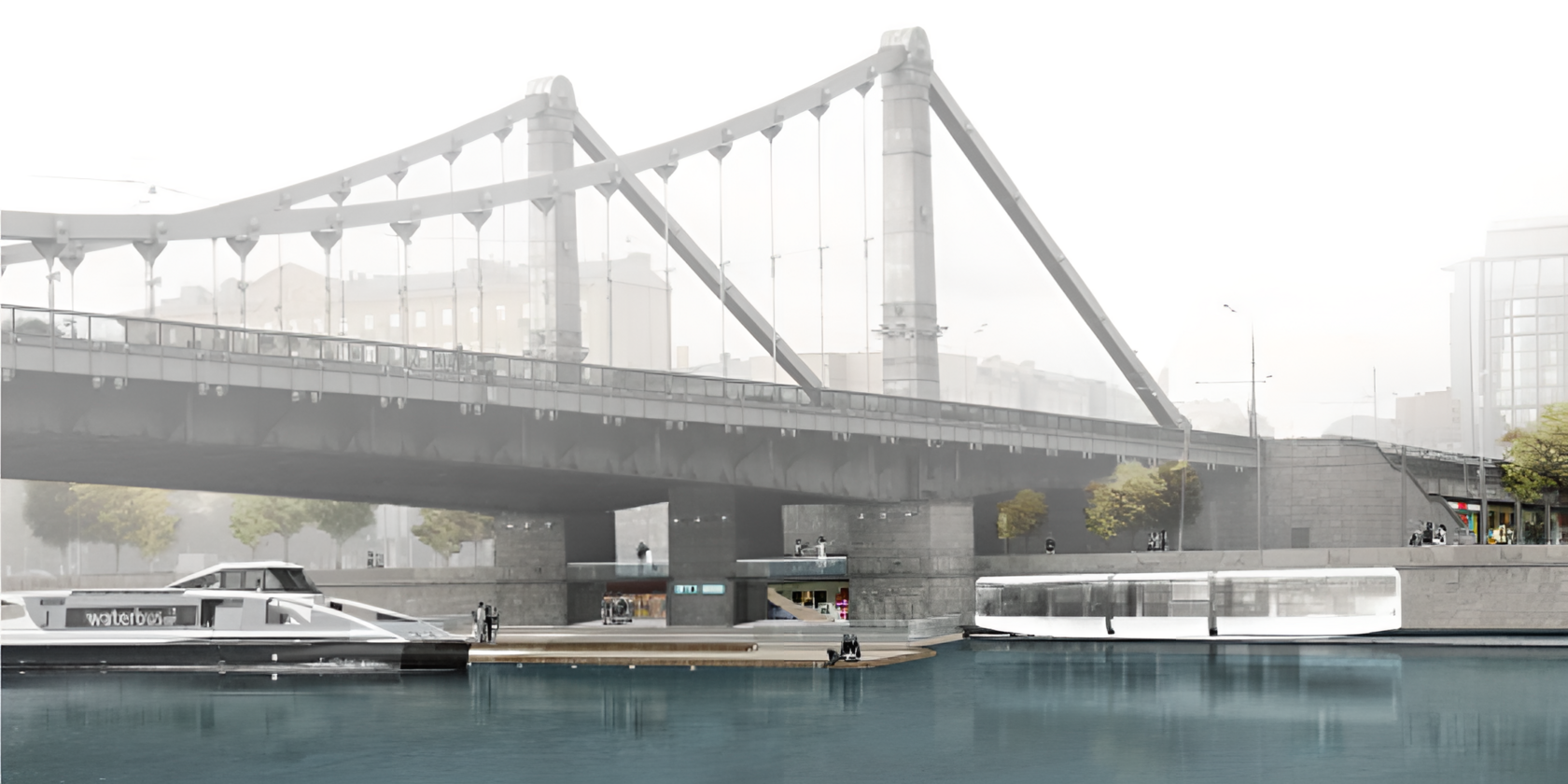

Ustinsky Bridge. proposal for development

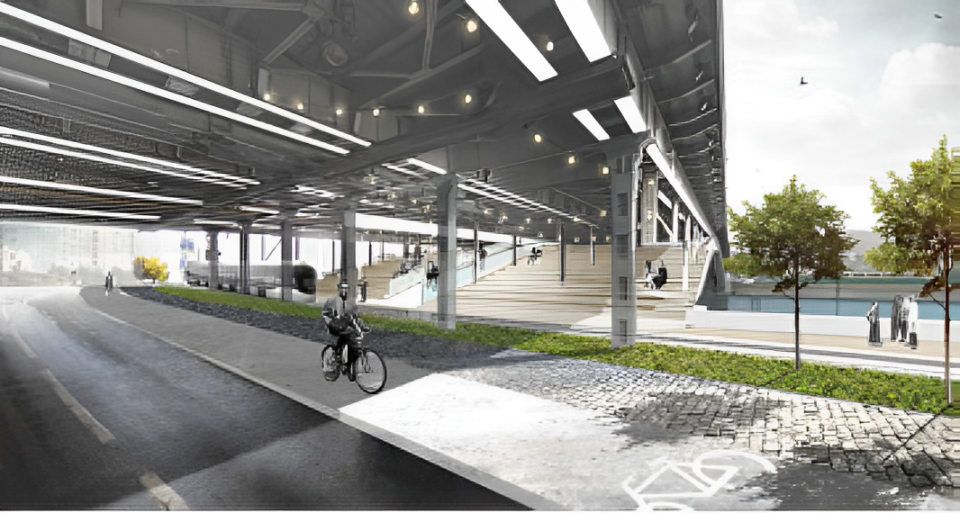
Riverline stop under the Ustinsky bridge

rationale behind the idea of river rail transport (Riverline)

comparison of master plans for four indicators


The site has one of the highest levels of transportation availability in the city. By connecting the first line of the projected river LRT to this node, the value of this area as an urban development resource is further enhanced.
The reconstruction of the Filyovskaya metro line and the withdrawal of industrial areas will entail the beginning of active development of the areas from the Third Ring Road to the Northern doubletrack of Kutuzovsky Prospekt. To this end, the project proposes to cover the Filyovskaya metro line and create a "green boulevard" above it. This will connect the urban fabric and extend the unified pedestrian network of the Moskva River embankments up to Strogino. The project proposes the creation of different types of housing oriented towards the Moskva River and the new boulevard. In the lower floors there will be a commercial accompanying function, increasing the quality of the environment along the river. On the site of the Expocentre it is proposed to erect a city-scale cultural and public center to complement the existing office and business functions that dominate this part of the city.
The LRT runs along the left bank of the river, making two stops in Moscow City and increasing the connection of this center with the rest of the city. The main port-transfer junction will appear under Dorogomilovsky Bridge, linking the TTC, MKZhD, three metro lines, LRT stops and other river transport. The junction is designed with the main volume of the TPA overlooking the river and connects the urbanized area of the City and the botanical garden named after Sechenogo.
The reconstruction of the Filyovskaya metro line and the withdrawal of industrial areas will entail the beginning of active development of the areas from the Third Ring Road to the Northern doubletrack of Kutuzovsky Prospekt. To this end, the project proposes to cover the Filyovskaya metro line and create a "green boulevard" above it. This will connect the urban fabric and extend the unified pedestrian network of the Moskva River embankments up to Strogino. The project proposes the creation of different types of housing oriented towards the Moskva River and the new boulevard. In the lower floors there will be a commercial accompanying function, increasing the quality of the environment along the river. On the site of the Expocentre it is proposed to erect a city-scale cultural and public center to complement the existing office and business functions that dominate this part of the city.
The LRT runs along the left bank of the river, making two stops in Moscow City and increasing the connection of this center with the rest of the city. The main port-transfer junction will appear under Dorogomilovsky Bridge, linking the TTC, MKZhD, three metro lines, LRT stops and other river transport. The junction is designed with the main volume of the TPA overlooking the river and connects the urbanized area of the City and the botanical garden named after Sechenogo.
Fili — master plan scheme. proposal
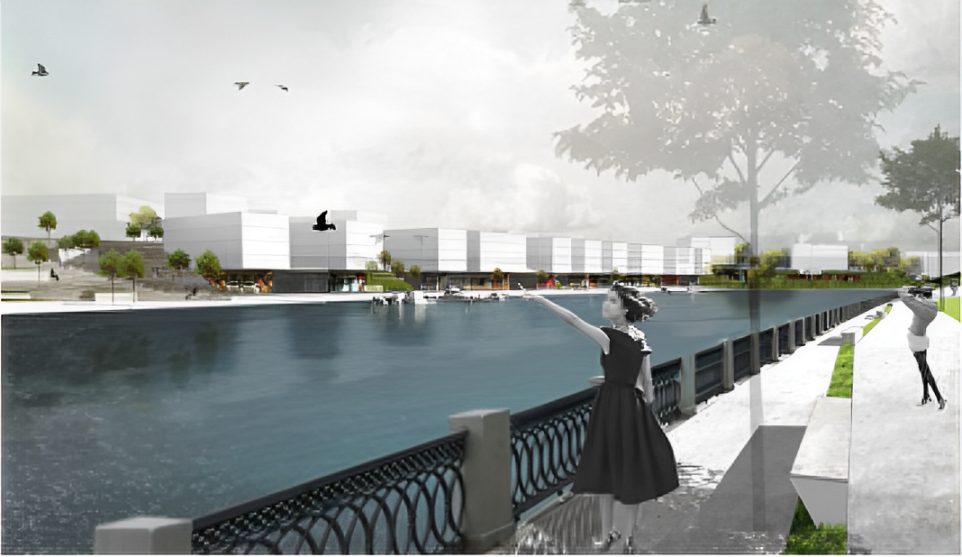
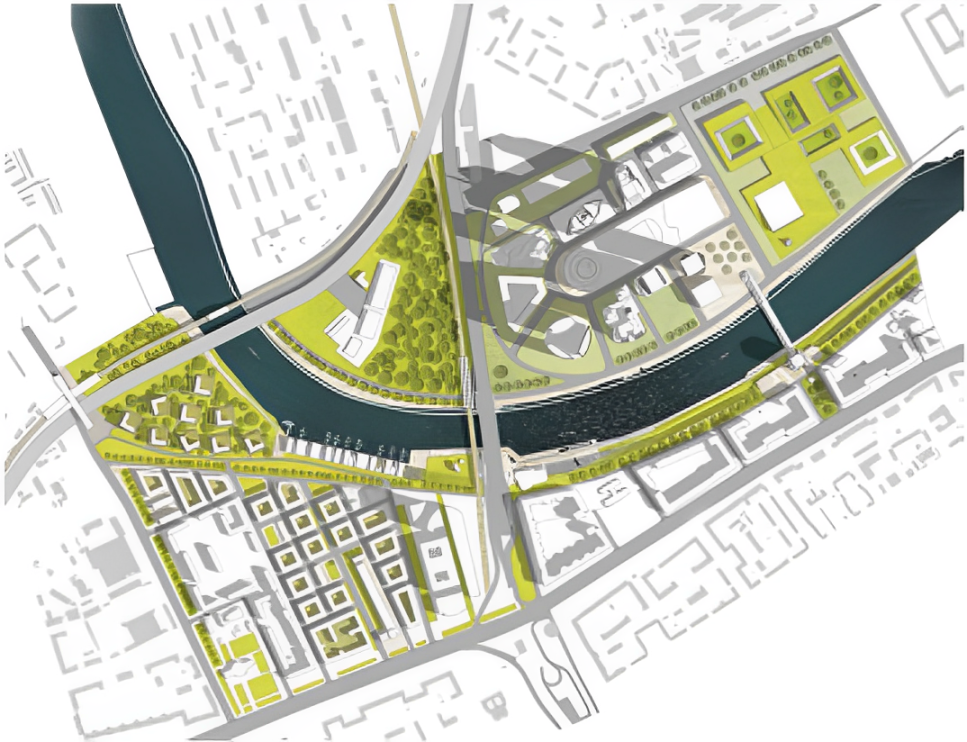

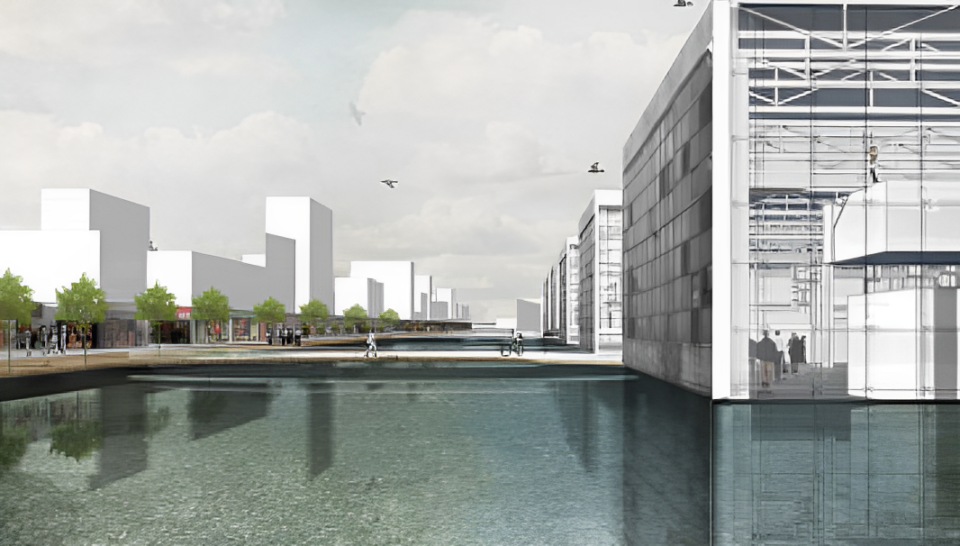
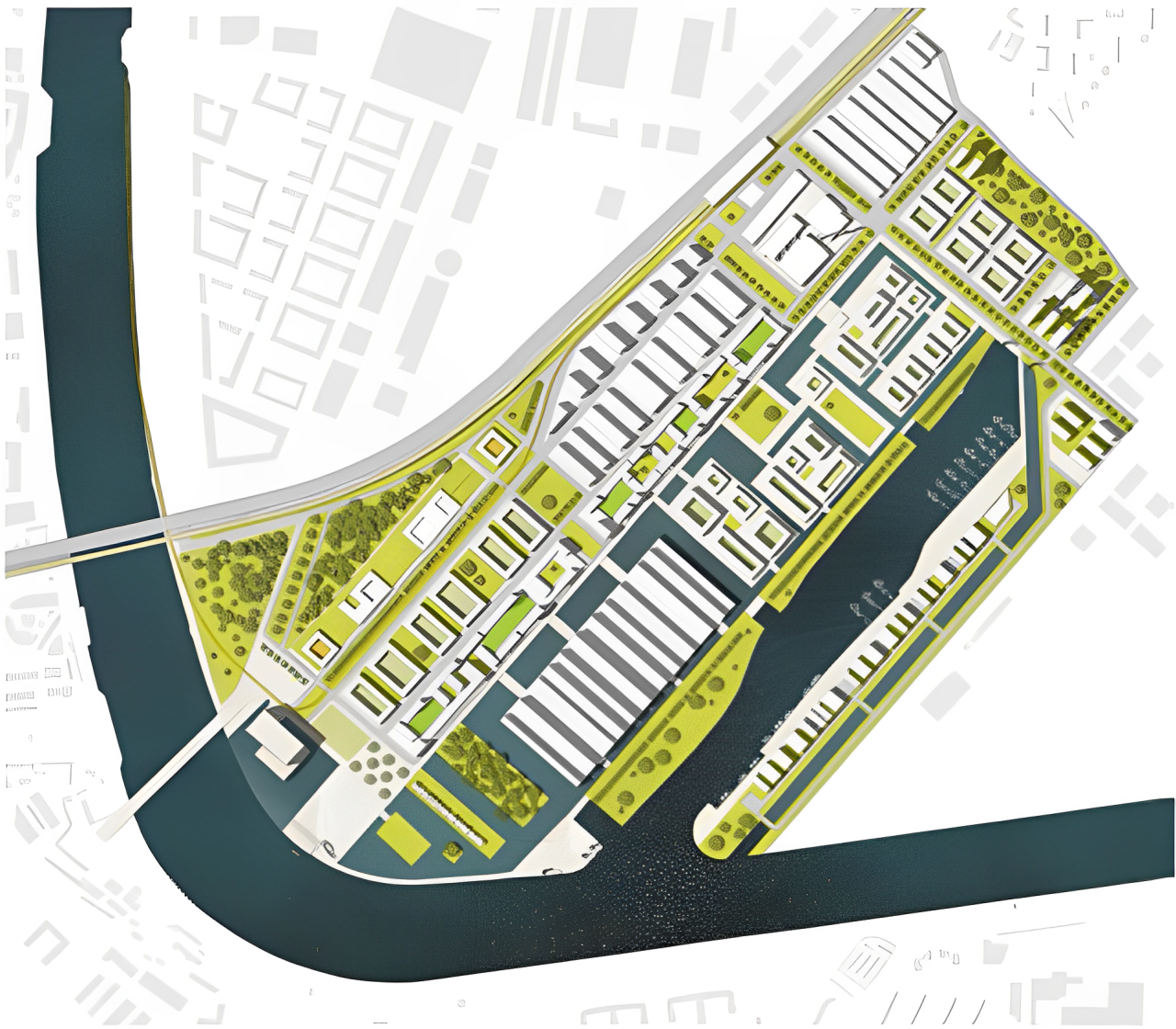
ZIL — master plan scheme. proposal
сonnection to public transport

scheme for launching new activity centers — “berth-stop”


comparison of master plans for key indicators, formation of the future model
This project is dedicated to the centennial anniversary of Moscow’s master plan. It was designed along the lines of development of a green ecological framework, transportation network and pedestrian routes, water infrastructure, and of rejection of monocentricity in favor of a polycentric city, giving people a choice, rather than imposing rigid rules of a life that is not quite comfortable. The development of territories directly adjacent to the Moskva River is unthinkable
without developing the river itself. Nowadays, the river has completely lost its function of a communication thoroughfare, this being due to the increased requirements on the speed of transportation of goods and people. The Moskva River is the only rarely travelled road that is left today, and it is being transformed from a mere element of urban design into a modern, eco-friendly and efficient thoroughfare. Each of the sites is analyzed in terms of it being an independent urban activity node.
without developing the river itself. Nowadays, the river has completely lost its function of a communication thoroughfare, this being due to the increased requirements on the speed of transportation of goods and people. The Moskva River is the only rarely travelled road that is left today, and it is being transformed from a mere element of urban design into a modern, eco-friendly and efficient thoroughfare. Each of the sites is analyzed in terms of it being an independent urban activity node.
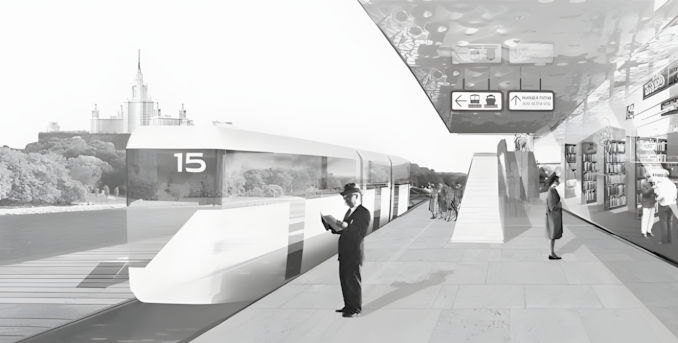
Riverline
competition 2015. Moscow, Russia
The concept of a High-Speed Public Rail Transport along the watercourse the Moskva River




